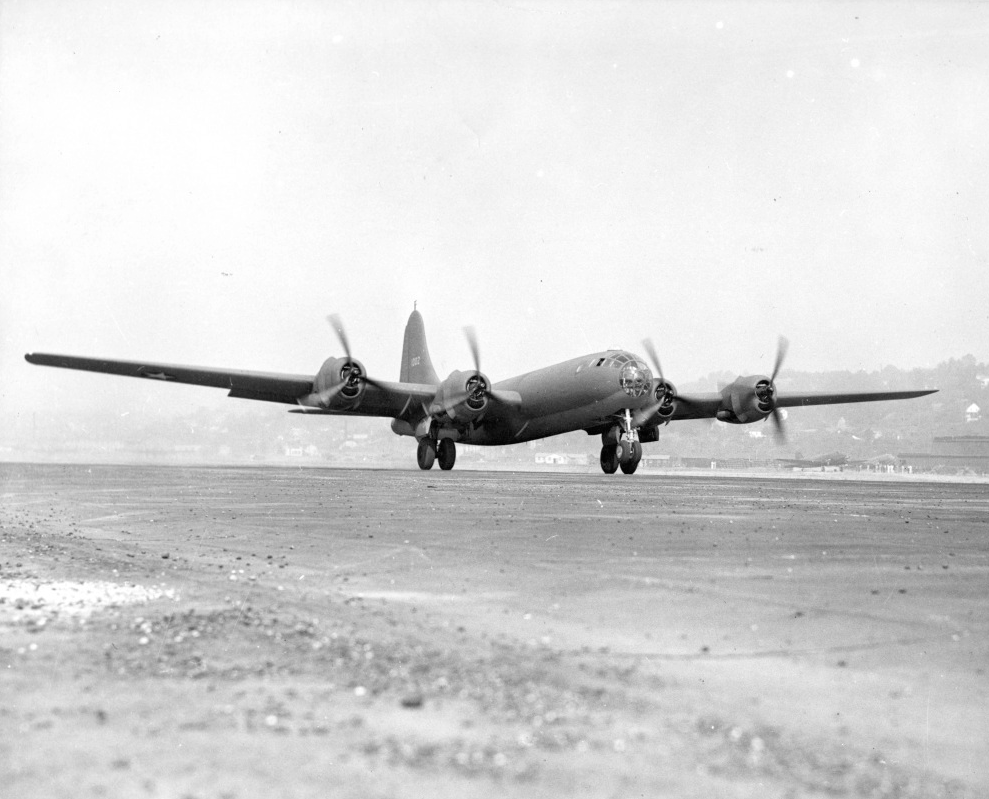

21 September 1942: At Boeing Field, Seattle, Washington, the Boeing Model 345, the first of three XB-29 prototypes, Air Corps serial number 41-002, took off on its first flight.
Edmund T. “Eddie” Allen, Director of Aerodynamics and Flight Research, was in command, with Al Reed, Chief of Flight Test and Chief Test Pilot, as co-pilot. They climbed to 6,000 feet (1,829 meters) and began testing the XB-29’s stability and control, control power and response, and stall characteristics.
The flight was uneventful. Landing after 1 hour, 15 minutes, Allen is supposed to have said, “She flew!”
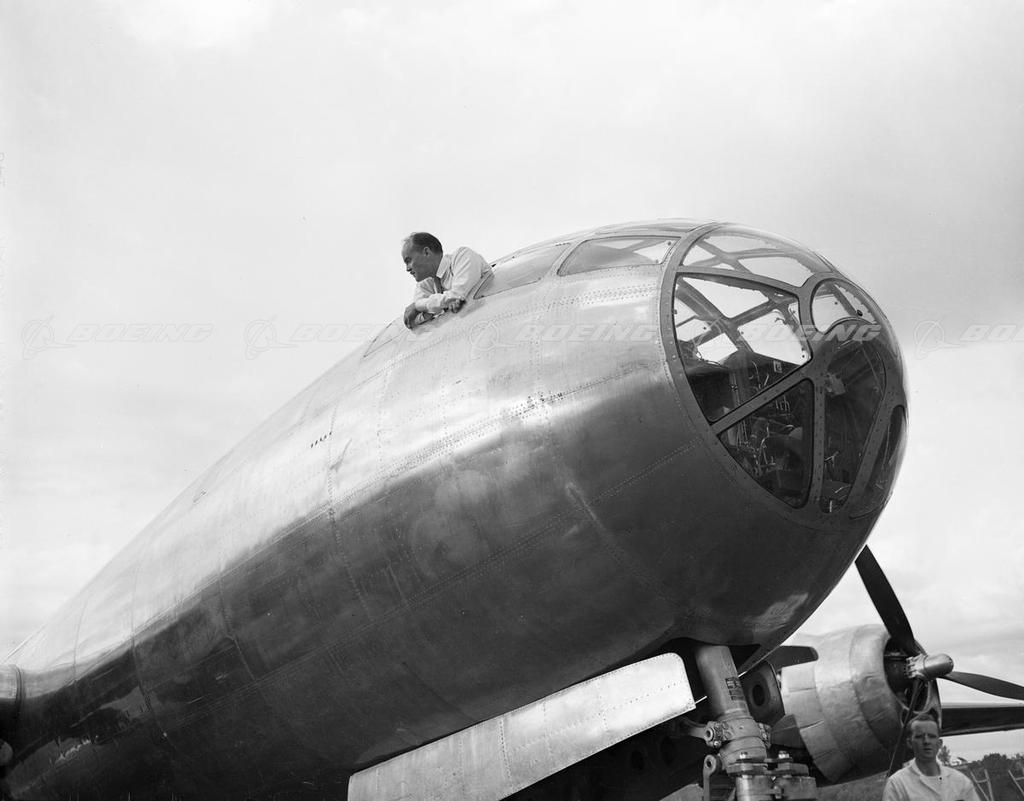
The XB-29 was 98 feet, 2 inches (29.921 meters) long with a wing span of 141 feet, 3 inches (43.053 meters), and 27 feet, 9 inches (8.458 meters) high to the top of its vertical fin. The prototype bomber had a gross weight of 105,000 pounds (47,627 kilograms).
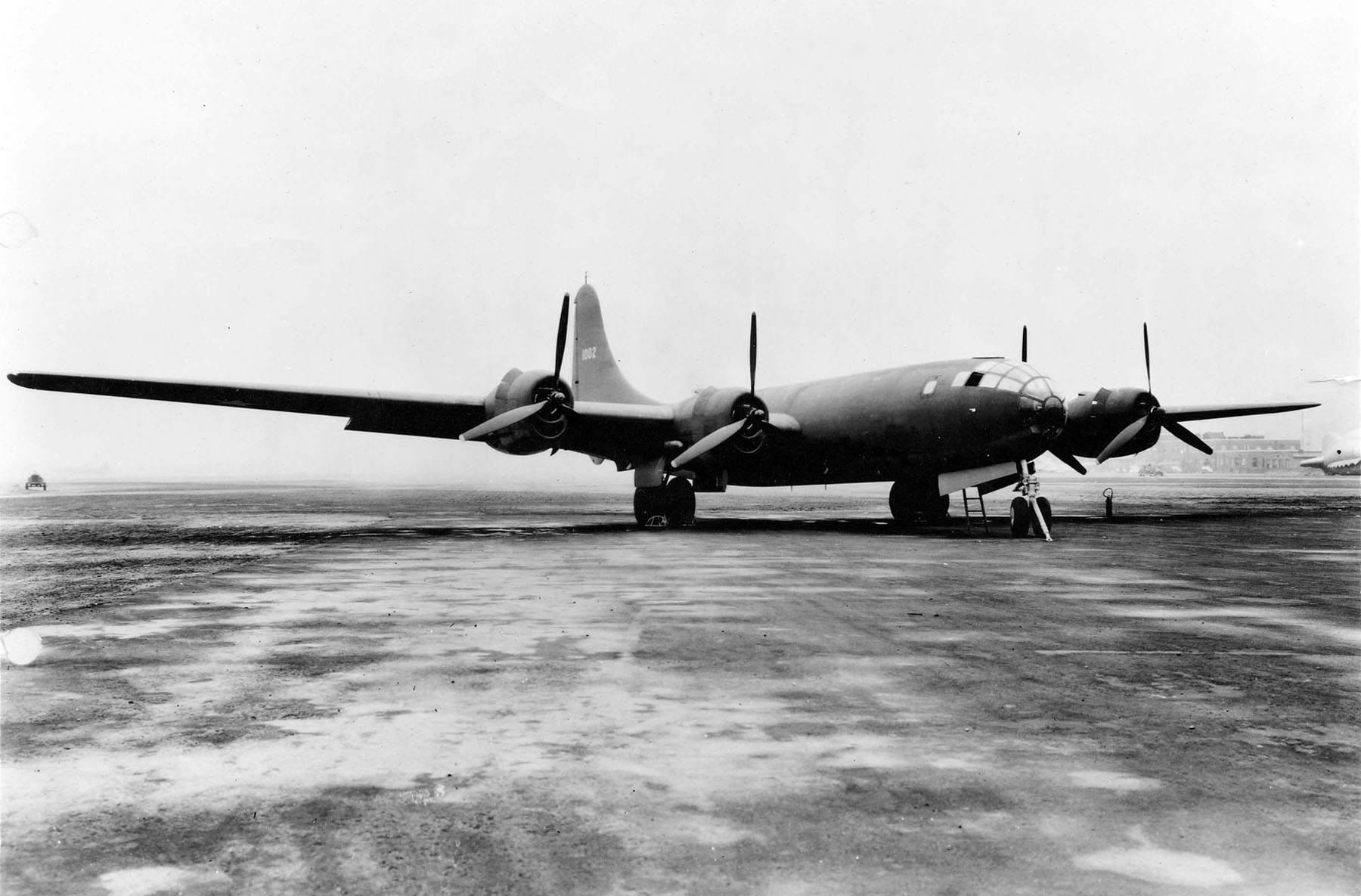
The prototype bomber was powered by four air-cooled, supercharged and fuel-injected 3,347.662-cubic-inch-displacement (54.858 liter) Wright Aeronautical Division Duplex-Cyclone 670C18H1 (R-3350-13) twin-row 18-cylinder radial engines with a compression ratio of 6.85:1. The R-3350-13 was rated at 2,000 horsepower at 2,400 r.p.m., and 2,200 horsepower at 2,800 r.p.m. for takeoff, burning 100-octane gasoline. These engines drove 17-foot-diameter (5.182 meters) three-bladed Hamilton Standard constant-speed propellers through a gear reduction of 0.35:1. The R-3350-13 was 76.26 inches (1.937 meters) long, 55.78 inches (1.417 meters) in diameter, and weighed 2,668 pounds (1,210 kilograms). Wright built 50 of these engines.

The XB-29 had a maximum speed of 368 miles per hour (592 kilometers per hour) and cruised at 255 miles per hour (410 kilometers per hour). Its service ceiling was 32,100 feet (9,784 meters).
The airplane was designed to carry 20,000 pounds (9,072 kilograms) of bombs. Though the prototypes were unarmed, the production B-29s were defended by 10 Browning AN-M2 .50-caliber machine guns in four remotely-operated power turrets, with 2 more .50-caliber machine guns and a single AN-M2 20mm autocannon in the tail.
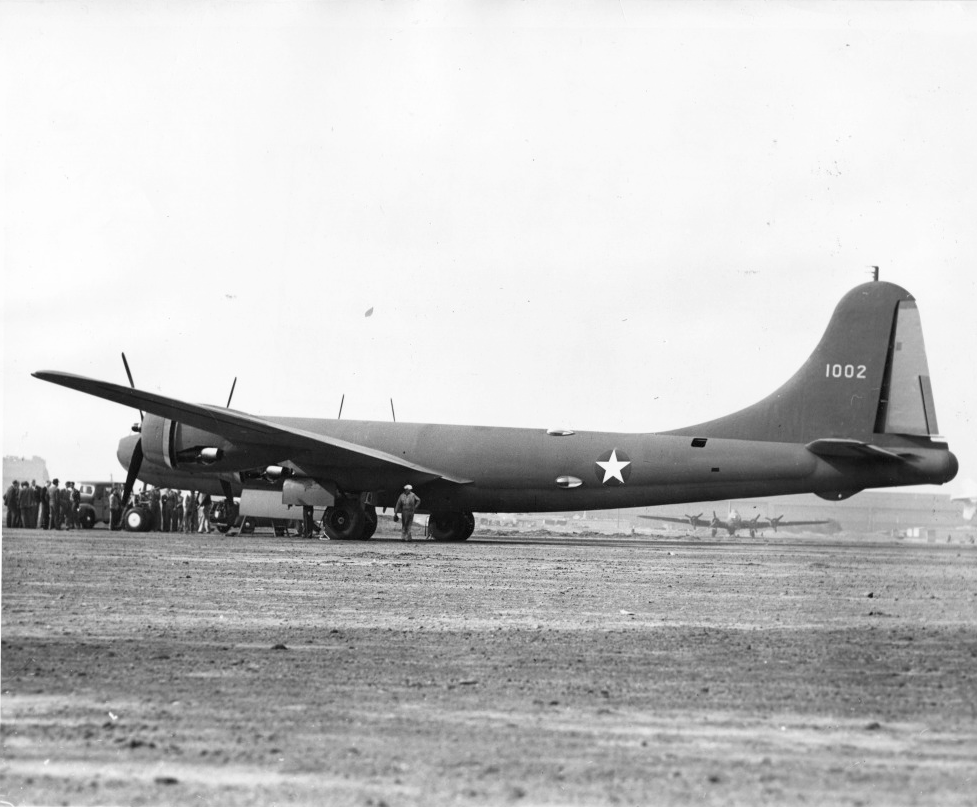
The B-29 Superfortress was the most technologically advanced—and complex—aircraft of the War. It required the manufacturing capabilities of the entire nation to produce. Over 1,400,000 engineering man-hours had been required to design the prototypes.
The B-29 was manufactured by Boeing at Seattle and Renton, Washington, and at Wichita, Kansas; by the Glenn L. Martin Company at Omaha, Nebraska; and by Bell Aircraft Corporation, Marietta, Georgia. There were three XB-29 prototypes, 14 YB-29 pre-production test aircraft, 2,513 B-29, 1,119 B-29A, and 311 B-29B Superfortress aircraft. The bomber served during World War II and the Korean War and continued in active U.S. service until 1960.
The first prototype, 41-002, was scrapped in 1948.
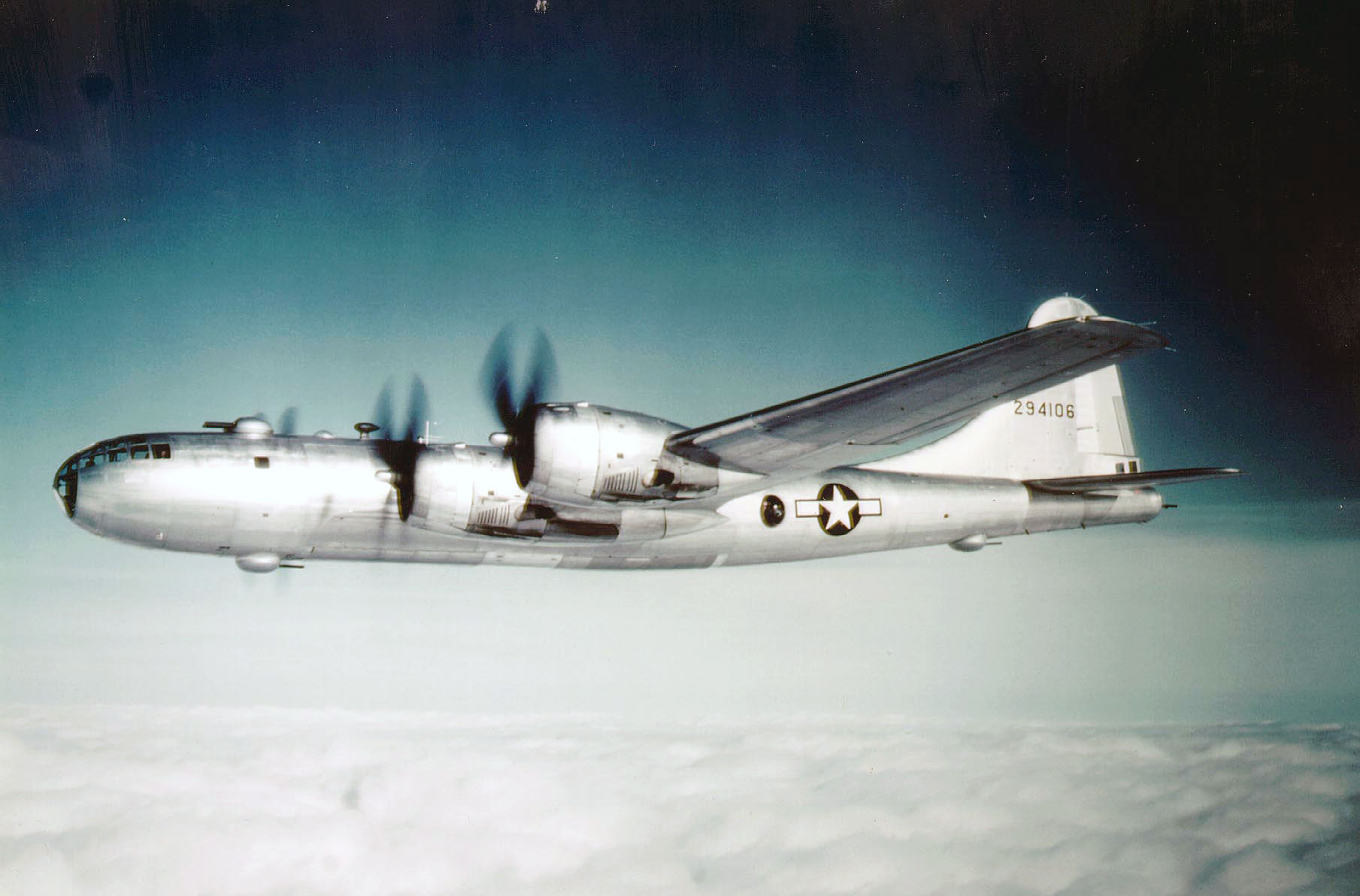
© 2018, Bryan R. Swopes
So who was the flight engineer? Not that he was important or anything.
I was unable to determine the names of any of the other personnel on the flight.
“Air Corps”? The “Air Corps” ceased to exist in 1941 when the US Army Air Force caome into existance.
Yes, Richard, and when was the airplane’s serial number—41-002— assigned?
When and why did the B-29 switch from the 3 blade props to the 4 blade?
The XB-29s and YB-29s used three-bladed propellers; the production B-29s used an upgraded engine and four-bladed propellers. Presumably, the new propellers were better matched to the new engines, but there could be many reasons for the change.
“The B-29 Superfortress was the most technologically advanced—and complex—aircraft of the War.” Hmm. Is this accurate?
Yes.
I agree with Bryan. In terms of overall performance the B-29 was unrivalled. The “three-billion-dollar-bet” was an integral part of the gargantuan Manhattan-machinery, and it delivered – this machine smashed Japan into pieces.
…
Now, if you think “technologically advanced = Jet engines”…
…yes, the germans had the Arado 234. But, it was tiny (only sligtly larger than a Spitfire or Mustang), problem-ridden, only a few were built (~200, and even less in at least halfway working condition), far less complex than the ´29, AND: it was useless as a bomber. Too small and no range.
It worked as a reconaissance aircraft, and the latest incarnation 234 C-4 with four engines once showed mindblowing performance with almost 600mph topspeed and a ceiling of 55000ft – but there were only TWO of them in more or less working condition (some more were build, but never flew more than a few minutes), and those arrived only weeks before the downfall.
So, _potientially_ an advanced plane, yes…
But in _reality_ no comparison to the B-29.
..
BTW: What a day in aviation – B-29 AND B-70!
And to think, there were only a mere 22 years between them… whow.
Hartmut, Are you Rudy’s son?
Tom: Do you mean the known Messerschmitt test pilot? We have common ancestors way back in the past, but unfortunately we never met.